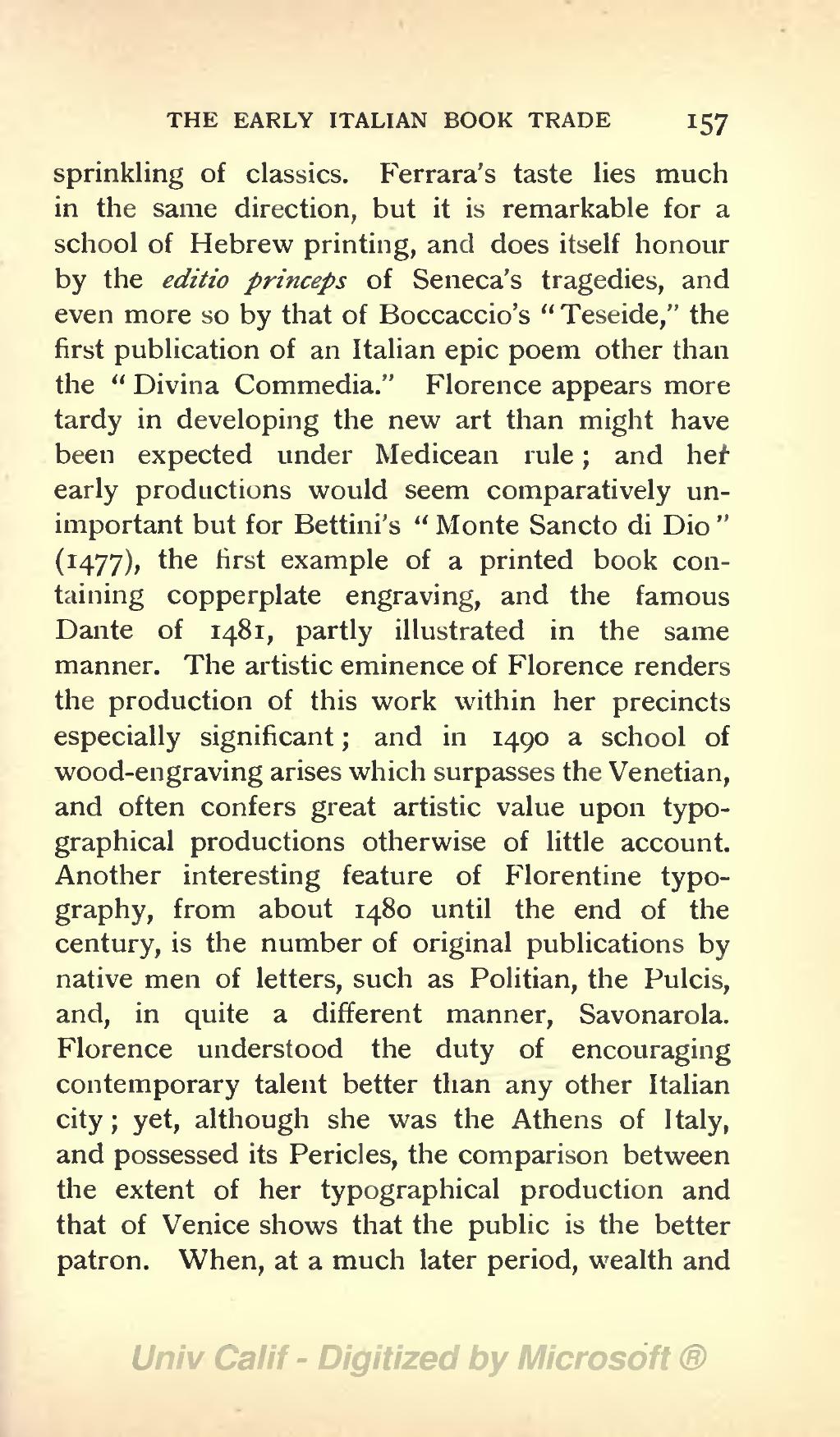sprinkling of classics. Ferrara's taste lies much in the same direction, but it is remarkable for a school of Hebrew printing, and does itself honour by the editio princeps of Seneca's tragedies, and even more so by that of Boccaccio's "Teseide," the first publication of an Italian epic poem other than the "Divina Commedia." Florence appears more tardy in developing the new art than might have been expected under Medicean rule; and hef early productions would seem comparatively unimportant but for Bettini's "Monte Sancto di Dio" (1477), the first example of a printed book containing copperplate engraving, and the famous Dante of 1481, partly illustrated in the same manner. The artistic eminence of Florence renders the production of this work within her precincts especially significant; and in 1490 a school of wood-engraving arises which surpasses the Venetian, and often confers great artistic value upon typographical productions otherwise of little account. Another interesting feature of Florentine typography, from about 1480 until the end of the century, is the number of original publications by native men of letters, such as Politian, the Pulcis, and, in quite a different manner, Savonarola. Florence understood the duty of encouraging contemporary talent better than any other Italian city; yet, although she was the Athens of Italy, and possessed its Pericles, the comparison between the extent of her typographical production and that of Venice shows that the public is the better patron. When, at a much later period, wealth and
Page:Essays in librarianship and bibliography.djvu/177
Appearance

